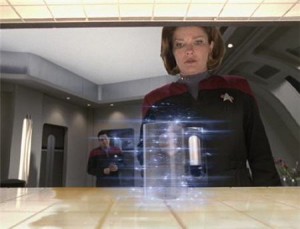This is part two of a five-part article entitled Biology: Not a Science Anymore.
There are at least eight sub-trends of the overarching shift from the Information Age to the Biology Age [1]. Each is significant, each is currently increasing its power, and each must be understood by the statesmen and social leaders of our day.
The first four trends are:
1. Business is coming to life.
2. Technology is coming to life.
3. Information is coming to life.
4. Culture is coming to life.
Together, these four trends are causing and will cause four other macro-trends, including:
5. The end of stability in national domestic life.
6. The end of security in all aspects of life — business, economic, governmental, etc.
7. The rising philosophy of General Evolution (not to be confused with micro- or macro-evolution).
And finally:
8. Biology as a branch of leadership and a central tenet of all statesmanship.
The impact on our lives can hardly be overstated.
All our central models and worldviews will change — or at least the language we use to support our views.
For example, in the 20th Century our vocabulary and ideas were infused with the teachings of physics: time, distance, size and mechanical interactions were the rule. We understood things by asking who? what? where? why? when? and how?
In contrast, in the Biology Century our central metaphors will be creativity, initiative, adaptability, and the organic interconnections of things.
 Instead of seeing a world made up of atoms, we will see a universe that can only be understood by comprehending relationships — not just knowing that relationships exist, mind you, but truly understanding them.
Instead of seeing a world made up of atoms, we will see a universe that can only be understood by comprehending relationships — not just knowing that relationships exist, mind you, but truly understanding them.
(As a side note, some authors including Tom Peters have suggested that therefore the 21st Century will be totally dominated by women).
In short, as Daniel Pink put it, the Right Brain will lead the 21st Century [2].
Relationships in business will dominate the bottom line; relationships in government will determine success in security, trade, economics, and even freedom; relationships in families will create a new class system, just as family arrangements created all historical class systems.
Relationships, not atoms, are the building blocks of our universe.
Let’s consider some specific examples of this shift into the Century of Biology, starting with the future of business. Twentieth century business emphasized the mechanical approach, including planning, strategizing, predicting, engineering the company, and controlling change.
A whole mechanical-based leadership industry grew around dozens of books which outlined the seven keys to success or the three choices of leaders. All of this is now turning to biology [3]. Just consider the following business phrases now in use in the general corporate world:
- Adaptive Organizations
- Metabolic Companies
- Evolutionary Corporations
- Permanent Volatility
- Connectivity
- Non-Linear Systems
- Organic Leadership
- Cell Management
- Organism Organization
- People Power
- Mutation Marketing
- Going Viral
- Responsive Customized Manufacturing
The list could go on. But consider another huge trend which is not only re-seeding the way leaders and managers work, but is actually re-focusing the products and services businesses offer.
Technology is literally coming alive.
In the excellent book It’s Alive: The Coming Convergence of Information, Biology, & Business by Christopher Meyer and Stan Davis, the authors outline several major fields of bio-technology in the coming decades, including, but not limited to, nano-tech and materials science.
Nano-tech, which literally means the technology of the very, very small, has virtually exploded in the past decade — and it is growing exponentially.
To summarize this exciting new field, suffice it to say that with current optical technology and the latest generation of super microscopes, almost anything can be done smaller.
For example, researchers can now manipulate atoms, see genes in action, watch proteins as they interact and DNA strands as they fold. Scientists have “slowed” light down enough to capture a photon particle, and they can routinely manipulate the gene.
Medical researchers can “see” directly into the cell and even laser inject a medication directly into a cell without a needle. Nano-technology is being pursued by numerous national militaries and a host of private companies.
Also consider the breakthroughs of materials science. Research is currently underway to create the matter compiler, which would deconstruct a substance and then re-pattern the molecules to form a different pre-programmed substance.
What does this mean?
 Imagine if ancient alchemy and Star Trek replicators meet in the middle sometime around the year 2052.
Imagine if ancient alchemy and Star Trek replicators meet in the middle sometime around the year 2052.
Or consider the concept currently under design of the Universal Mentor — a wrist watch or a pair of glasses with a world wide web link and audio capability which listens to your conversations and pipes answers, facts, quotes and sources directly into your watch or earpiece.
Experience Entertainment may be the closest to manufacturing these coming gadgets — where the interactive movie or CD connects directly to the central nervous system or visual cortex so that you are Arnold Shwarzenegger or Angelina Jolie.
And already in operation is the Social Science Simulator, which scholars are using to predict the results of a certain policy or law.
As fantastic as these ideas may be, they are still all based on mechanical technology, right? For now, yes. But significant funding and research are being put into “smart” technologies — machines which think, learn, evolve and possibly even “feel”.
Of course, the movie industry has shown the dangers of this in a barrage of movies in the last twenty years. But two facts remain: bio-tech research is in its embryonic stage, and embryos grow and develop.
Upcoming Article, Part III: Biological Engineering & Bio-Mathematics
[1] Ideas in this section and the next are found in Christopher Meyer and Stan Davis, It’s Alive: The Coming Convergence of Information, Biology, and Business. Crown Business: New York.
[2] See Daniel H. Pink, A Whole New Mind: Moving from the Informational Age to the Conceptual Age. 2005. Riverhead Books: New York.
[3] Ibid.






One of the most frustrating things I noticed while doing biological research was that investigators made huge assumptions about the research they were doing in isolated settings. For example, immunological assays were done in isolated cell culture dishes by changing single components of the medium. The data gathered from such experiements were valuable if recognized for how limited they were.
The relationships of these data points were not accentuated, only the data themselves. Because we have specialized biology and science to such a degree, these experiements offer very little applicable or REAL information. I agree, it is the relationships that are the building blocks of the universe.
You got me thinking. The Founding Generation in the USA practiced an unprecedented belief in humanity when it asserted that we could govern ourselves. It seems that never before have our freedoms and happiness been so dependent on our belief or lack of belief in humanity.
I’d guess that the fluid social/government forms, which seem to be coming, will likely originate and be defined in the context of relationships. Relationships without belief, like bodies without water or rather bodies without souls, wilt and deteriorate. I think the discovery and continued development of these forms will come from social entrepreneurship, drawing on its inherent initiative and belief in humanity and its blunt recognition of its faults.
As forms develop, the elements of freedom will need to be interwoven into them, allowing development to occur organically through intuitive use of deeply rooted understanding of human nature. This kind of understanding and application will likely require scholarship, grit and all of us together, but perhaps most of all, our belief in the inherent goodness of humanity will be critical. When this and the wise optimization of our limits and tendencies are factored in, we may be in for another 5000-year leap.
I agree with your perspective. I also think of one of the best lectures that I ever heard you give…the nature of male and female energies…certainly a part of biology!
Within biological forms are these two ever constantly interacting energies.
Chinese medicine would have us believe that we have both male and female energies equally so within ourselves.
As we pursue life..and quality of life…the ability to smoothly interface these approaches….and integrate might be more powerful than any technology coming afore.
To piggyback on Allen’s comment , I believe that the elements of freedom come first…and then the technology interwoven around them…have we lost those elements of freedom because of the decline of scholarly thinking on a personal level…?
A free thinking man (or woman) is a dangerous thing if not rooted (pun intended) in the principles of which the Earth itself are constructed. Since we are made up of the same elements as the Earth…it would seem that we might need to take care to not upset the balance (a tribal function) which Nature in her Superior Design so eloquenlty bestows upon us.
The freedom allowed from “free” as to the resources of Nature will allow us liberty…not the things made of man that are offered at too high a price…which may be dependancy and loss of liberty.